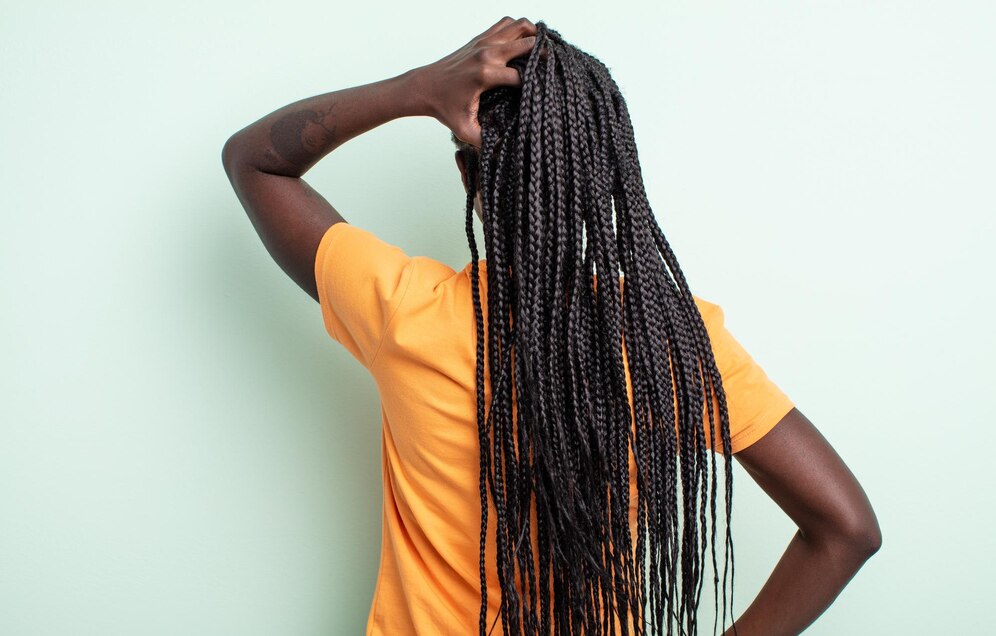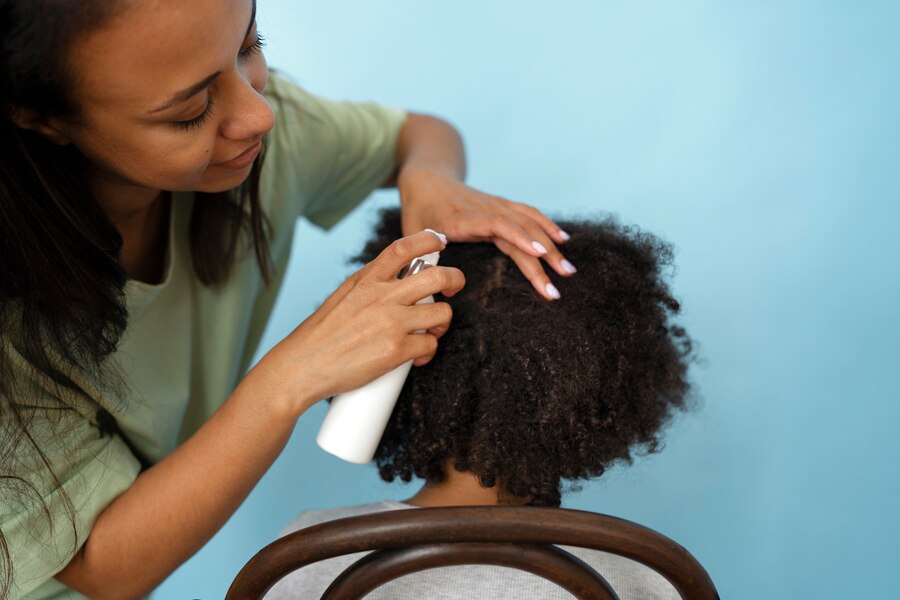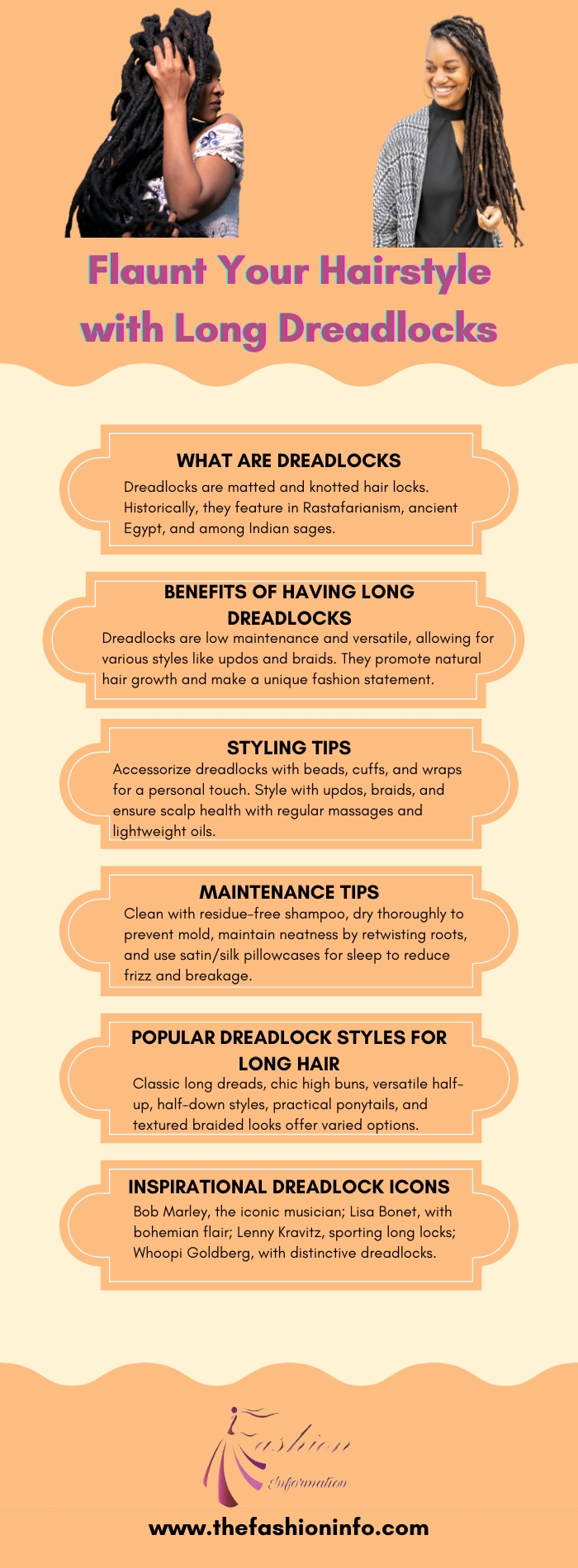Table of Contents
Introduction
In the realm of hairstyles, the fusion of dreadlocks on longhair creates a remarkable and distinct look that’s impossible to ignore. Long hair has a natural allure, and when combined with the texture and character of dreadlocks, it takes on a unique personality. In this blog, we’ll explore the captivating world of dreadlocks on longhair, highlighting their visual appeal, cultural relevance, and essential care tips that allow you to confidently flaunt your distinctive style.
How to start dreadlocks on longhair

If you have long hair and the desire to start your dreadlock journey, here’s a simple guide to help you get started:
Start with Clean Hair:
Begin with freshly washed and completely dry hair. Avoid using conditioner, as it can impede the knotting process.
Section Your Hair:
Divide your long hair into sections, depending on your desired dreadlock thickness. Smaller sections result in thinner dreads, while larger sections create thicker ones.
Choose Your Method:
Twist and Rip: Twist sections of hair tightly while simultaneously pulling them apart to create knots along the length.
Backcombing: Comb the hair backward from the tips toward the roots to generate knots and tangles.
Freeform: Allow your hair to naturally form dreadlocks over time for a more spontaneous look.
Maintenance:
To encourage your dreadlocks to tighten and mature, consider regular maintenance techniques like palm rolling and using a crochet hook to manage loose hairs.
Exercise Patience:
The process of forming and maturing dreadlocks can vary widely based on factors such as hair type and maintenance. Be prepared for a journey that may take several months to a few years.
Tips for Maintaining Dreadlocks on Longhair
Keeping your dreadlocks on longhair looking vibrant and healthy requires some special care:
Regular Washing: Use a residue-free shampoo and ensure thorough rinsing. Proper drying is essential to prevent mold or mildew formation.
Palm Rolling: Gently roll your dreadlocks between your palms to promote knot tightening and texture development.
Manage Weight: The weight of long dreadlocks can strain your scalp and hair follicles. Be mindful of adding too much weight to your locks.
Sun Protection: Shield your dreadlocks from excessive sun exposure, which can cause color fading. Consider using UV-protective products or wearing a hat.
Also Read: Unveiling the Timeless Appeal: The Men’s Buzz Cut
How to repair dreadlocks: Dreadlocks on longhair

Repairing dreadlocks is a common task for maintaining their health, neatness, and longevity. Over time, dreadlocks may experience wear and tear, loose hairs, or other issues that need attention. Here are some steps and tips on how to repair dreadlocks:
Gather Your Supplies:
- Fine-toothed comb or crochet hook
- Residue-free shampoo
- Towel
Wash Your Dreadlocks: Start by washing your dreadlocks thoroughly with a residue-free shampoo. Ensure that your hair is clean and free from dirt, oils, and debris. Rinse thoroughly and pat dry with a towel.
Assess the Damage: Examine your dreadlocks carefully to identify the specific areas that need repair. Common issues include loose hairs, fraying, or thinning sections.
Tighten Loose Hairs:
For loose hairs along the length of your dreadlocks, you can use a crochet hook to weave them back into the dread. Insert the hook through the dread, hook the loose hair, and pull it through. Be gentle to avoid damaging the hair.
Repair Fraying Ends:
If the ends of your dreadlocks are fraying or unraveled, you can use a crochet hook to tuck the loose strands back into the dread. Gently insert the hook into the frayed section and pull it back into the dread.
Professional Help: If you’re unsure about how to repair specific issues or if your dreadlocks have significant damage, consider seeking the assistance of a professional hairstylist who specializes in dreadlocks. They can provide expert guidance and solutions.
How to take care of dreadlock : Dreadlocks on longhair
Minimize Friction:
Reduce friction between your dreads and pillowcase by using a satin or silk pillowcase. This helps prevent hair breakage and keeps your dreads intact.
Fix Thinning Sections:
Thinning sections of dreadlocks can be repaired by backcombing or twisting and ripping the hair to encourage knotting and tightening. Use a fine-toothed comb to backcomb the thin section, or twist and rip it to create new knots
Regular Maintenance:
Make repairing and maintaining your dreadlocks a part of your routine. Regularly check for loose hairs, fraying, or thinning sections and address them promptly to prevent further damage.
Patience:
Repairing dreadlocks may take time, especially for more severe issues. Be patient and persistent in your efforts to maintain and repair your dreads.
Also read : Embracing The Beauty And Diversity Of Dreadlocks
Rapunzel dreadlocks
In this reimagined tale, Rapunzel’s hair was a cascade of tightly coiled and beautifully formed dreadlocks. Each dreadlock told a story of patience, individuality, and a unique sense of style.
Rapunzel’s Journey to Dreadlocks
Rapunzel’s journey to dreadlocks began with a desire for something different. She had always admired the uniqueness of dreadlocks and the way they allowed individuals to express themselves freely.
The Transformation
Rapunzel’s hair was naturally wavy, which made it an ideal candidate for dreadlocks.
Maintaining Her Dreads
Rapunzel quickly learned that maintaining her dreadlocks required care and patience. She washed her dreads regularly with a gentle, residue-free shampoo and made sure to rinse them thoroughly.
A Twist on the Tale
As word of Rapunzel’s extraordinary dreadlocks spread, her story became an inspiration to others. People from all over the kingdom were enchanted by her style and began to embrace dreadlocks as a symbol of individuality and self-expression.
How do you get lice out of dreadlocks
Getting rid of head lice from dreadlocks can be challenging due to the hair’s texture and the difficulty in reaching the lice and their eggs (nits) nestled within the locks. Here’s a step-by-step guide on how to effectively remove lice from dreadlocks:
Gather Supplies:
- Fine-toothed lice comb (metal combs tend to work better)
- Lice removal solution (over-the-counter or prescription)
- Plastic shower cap or plastic wrap
- Hair conditioner
- Towels
Preparation:
- Before beginning, have all of your supplies ready.
- Protect the surrounding area from lice or nits falling out by covering furniture or using disposable plastic coverings.
- Ensure good lighting in the room
Apply Lice Removal Solution:
Follow the instructions on the lice removal solution carefully. Apply it to your dreadlocks, ensuring full coverage, and follow the recommended waiting time.
Comb-Out Process:
- Using the fine-toothed lice comb, start at the scalp and carefully comb through each dreadlock, section by section.
- Be patient and thorough, making sure to remove both live lice and nits. From the roots to the tips, brush.
- After each pass, wipe the comb to remove any lice or nits.
- Continue this process for all your dreadlocks.
Rinse and Condition:
- After completing the comb-out process, rinse your dreadlocks thoroughly with warm water to remove the lice removal solution.
- Apply a generous amount of hair conditioner to your dreadlocks. This will help loosen any remaining nits and make it easier to remove them
Repeat Comb-Out:
- Using the lice comb, carefully comb through your dreadlocks once more while they are coated with conditioner.
- Focus on removing any remaining nits. Wipe the comb clean after each pass
Rinse Again: Rinse your dreadlocks thoroughly to remove the conditioner and any dislodged nits.
Dry Your Hair: Use a clean towel to gently pat your dreadlocks dry.
Repeat as Needed: Lice treatment may need to be repeated after a week to ensure all lice and nits are eliminated. Follow the instructions provided with the lice removal product.
Also Read: Top 8 Smart Weighted Hula Hoops For Fitness Pros – 2024
Prevent Reinfestation:
- Wash all bedding, clothing, and personal items that may have come into contact with lice in hot water and dry them on high heat.
- Clean your living areas thoroughly with a vacuum.
- Avoid head-to-head contact with others to prevent reinfestation.
Regular Maintenance:
- Continue to monitor your dreadlocks for any signs of lice or nits and take quick action if you suspect an infestation.
- Removing lice from dreadlocks can be a time-consuming and challenging process. If you find it difficult or are unable to eliminate the lice on your own, consider seeking professional help from a lice removal specialist who has experience working with dreadlocks. They may have specialized techniques and tools to ensure effective lice removal.
Infographic: Flaunt Your Hairstyle with Long Dreadlocks


